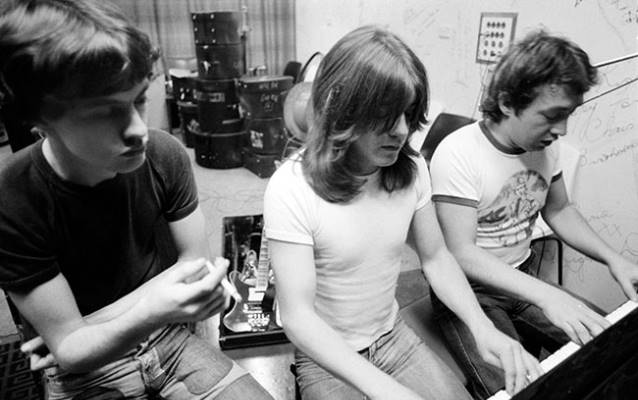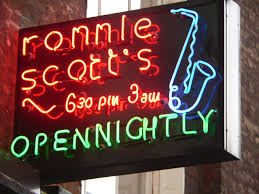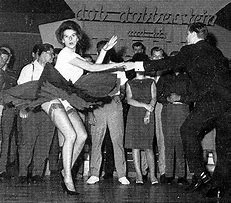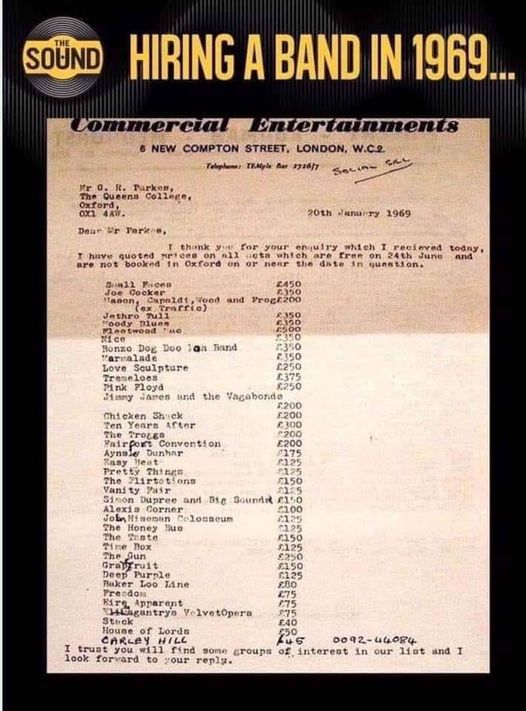Another top guitarist you won’t have heard of.
I don’t think there’s a town or city in the English-speaking world that doesn’t boast at least one potentially world-class rock guitarist. A big call, granted, but just think of all the great guitarists who’ve played in your local bands over the years, whom I bet remain mostly unknown. That’s the way it’s been since the 1960s. The competition, if you’re an electric guitarist, has always been frightening.

Here in the UK, they’re currently running a TV program called Guitar Star and the standard is phenomenal. The judges are George Benson, who needs no introduction; Miloš, one of the world’s most popular classical guitarists; and Tony Visconti, producer for David Bowie, Iggy Pop and T-Rex, amongst others. The contestants include a 14-year-old boy who played ‘Bohemian Rhapsody’ on his classical guitar, as you can witness here when Billy was aged 12. He’s improved a bit since.

Other contestants were equally inspiring. The young – girls and guys – were brilliant beyond their years; and the older guitarists were so good you wondered why they hadn’t broken through after decades on the circuits.
And that’s the point. No matter how good you are, you need much more than talent and hard work, to get noticed. You need lashings of luck and lots of help. I’m sure thousands of great unknown guitarists would agree with that, as would those guitarists fortunate enough to make it. This is why, in my own small way, I try to highlight musicians and song writers I feel deserve a bit of spotlight.
Such musicians and composers include The Bloody Nerve, the Nashville-based band founded by Stacey Blood and Laurie Ann Laine, whose bio I wrote. If you read it (below) I think you’ll agree The Bloody Nerve deserve to give their run of bad luck a bloody good kicking.
https://paulmerryblues.com/2015/08/the-bloody-nerve-new-biography.html
And check out their latest single.
Returning the favour, guitarist/composer Stacey Blood’s formidable IT knowledge, in particular, was instrumental in getting this old dinosaur’s website up. Everyone should know about the history of blues and rock, Stacey and Laurie believe. Therefore they want people to learn of my book, “America’s Gift, the untold story of how blues evolved”, so as to discover the incredible forgotten history “America’s Gift” resurrects.
Carlos Wilde, based in Spain, is another musician who deserves to be better known. His catchy pop-rock with its blues-based guitar licks is barely known in the USA and UK. Here’s one of Carlos’s more gentle numbers:
http://https://carloswilde.bandcamp.com/album/a-story
On Facebook and Twitter, my ‘friends’ and ‘followers’ include highly-talented musicians and composers who are, sadly, too numerous to mention. But every now and then something out of the ordinary catches my ear (not that I’m saying the others are ordinary – far from it).
 In this latest case, it’s a CD featuring incredible blues-based rock guitar playing. It’s called “After The Storm” by a English guitarist calling himself simply, Marino. Back in London after years in Los Angeles, Marino’s “After The Storm” album features musicians of the calibre of Larry Taylor, the former Canned Heat and John Mayall bassist; and Tommy Eyre, keyboard player on Joe Cocker’s “With A Little Help From My Friends” and Gerry Rafferty’s “Baker Street” – now classics in the pantheon of rock.
In this latest case, it’s a CD featuring incredible blues-based rock guitar playing. It’s called “After The Storm” by a English guitarist calling himself simply, Marino. Back in London after years in Los Angeles, Marino’s “After The Storm” album features musicians of the calibre of Larry Taylor, the former Canned Heat and John Mayall bassist; and Tommy Eyre, keyboard player on Joe Cocker’s “With A Little Help From My Friends” and Gerry Rafferty’s “Baker Street” – now classics in the pantheon of rock.
After The Storm also has a track produced by Mick Ronson, the now legendary lead guitar-playing foil to David Bowie’s Ziggy Stardust in the legendary Spiders From Mars. Since Mick Ronson died in 1993, you might ask what he was doing producing Marino. The answer, I believe, is that both guitarists hail from Hull*, Yorkshire. (Tommy Eyre, incidentally, comes from nearby Sheffield.) And Yorkshire lads stick together.
This Ronson-produced instrumental, “Moonlight’s Daughter”, sees Marino alone playing solo lead and acoustic guitars (no one else is needed), in a style reminiscent of Carlos Santana. I used to think Santana was one of those guitarists whose unique sound, tone and technique couldn’t be emulated, but Marino manages to capture it and ride it home hard – and on more than one track. In fact, Marino sounds like Santana might sound were he a little less Latin and a little more Hull, rocked it up a bit and got stuck into the wah wah pedal.
For hard rock fans, let’s have a look at Marino in an earlier incarnation – before the storm, perhaps. And don’t miss his guitar solo.
How’s that for shredding? It just shows what Marino’s capable of. “After The Storm”, however, sees the guitarist in a more mature light. Dare I describe the album as grown up blues rock for the more discerning blues rock aficionado. The liner notes say the album is a celebration of 30 years in rock ’n’ roll which shows you how long Marino has been around. Nevertheless, he plays the electric guitar in a way I just love hearing it played. Younger listeners might find its blues rock style dated but that’s their loss.
All songs on “After The Storm” were composed by Marino, except the 1937 Sonny Boy Williamson 1 number, “Good Morning, School Girl”. This Chicago Blues classic became “Little School Girl” when covered by Muddy Waters, John Lee Hooker and co. in the 1950s and then “Good Morning Little School Girl” when recorded in 1961 by Don and Bob. The Yardbirds (with Eric Clapton) covered Don and Bob’s version in 1964 and Marino gives it another outing here, which shows where his heart lies.
“Marino After The Storm” features rock blues-style guitar playing of the very highest quality, by a guy you’ve probably never heard of. I found it almost orchestral in its layering of rock blues texture. Find out more about “Marino After The Storm” on the website below:
http://www.marinoafterthestorm.com
* Some trivia for the historians among us. Hull was famously home of William Wilberforce, known for his successful campaign to abolish slavery in the British Empire in the early nineteenth century.






